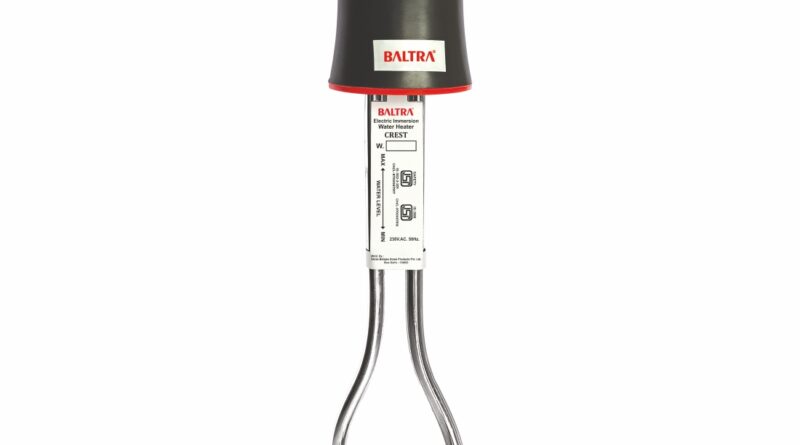Immersion Rod: Affordable and Efficient Water Heating Solution
When the winter chill sets in, having access to warm water becomes essential. While geysers and water heaters are common, one of the most economical and efficient alternatives is the Immersion Rod. Compact, portable, and incredibly easy to use, an immersion rod is a go-to choice for millions of households across India.
In this blog, we’ll explore everything you need to know about immersion rods—from their functionality and benefits to safety tips and buying guides.
🛠️ What is an Immersion Rod?
An immersion rod is an electrical appliance used to heat water by directly immersing the heating element into a bucket or container. It consists of a metal coil, usually made of copper or stainless steel, that heats up when connected to electricity, raising the temperature of the water around it.
It is widely used in homes, hostels, PGs, and during travel due to its low cost, energy efficiency, and ease of use.
⚙️ Key Features of an Immersion Rod
✅ Portable Design
Small and lightweight, it can be carried anywhere—perfect for travelers and small spaces.
✅ Quick Heating
Depending on the power (generally 1000W to 2000W), it can heat a bucket of water within 10-15 minutes.
✅ Energy-Efficient
Consumes less electricity compared to conventional geysers.
✅ Affordable
One of the most budget-friendly water heating appliances in the market.
✅ Water Level Indicator
Some models come with water level markings or indicators for safe usage.
✅ Benefits of Using an Immersion Rod
| Benefit | Description |
|---|---|
| Cost-Effective | Significantly cheaper than geysers or water heaters. |
| Low Maintenance | No complex mechanisms; easy to clean and maintain. |
| No Installation Required | Just plug and play. Ideal for rented apartments and temporary setups. |
| Travel-Friendly | Fits easily in bags for outstation trips or stays. |
| Instant Hot Water | Heats small amounts of water quickly without waiting. |
💡 How to Use an Immersion Rod Safely
Using an immersion rod is simple, but safety is critical since it operates directly in water.
⚠️ Safety Tips:
- Always place the rod fully immersed in water before plugging it in.
- Ensure your hands are dry while plugging or unplugging the rod.
- Do not touch the water while the rod is plugged in.
- Keep it away from children.
- Use the rod in a plastic bucket to avoid shocks (avoid metal containers).
- After use, unplug first, then remove the rod from water.
🔍 How to Choose the Right Immersion Rod
When selecting the best immersion rod for your needs, consider the following factors:
1. Power Rating (Wattage)
- 1000W – Ideal for small water quantities.
- 1500W to 2000W – Heats water faster, good for larger buckets.
2. Material Quality
- Look for rods with anti-corrosive copper or stainless steel heating elements.
3. Brand Warranty
- Choose products with at least 1 year of warranty.
4. Handle and Grip
- Heat-resistant and shock-proof plastic handles improve safety.
5. Indicator or LED Light
- Some rods come with an indicator to show power status.
🧽 Cleaning and Maintenance Tips
- Unplug and let the rod cool before cleaning.
- Remove white scale buildup with vinegar or lime.
- Store in a dry place to prevent rust or corrosion.
- Regular cleaning ensures long life and better heating efficiency.
🏠 Who Should Use an Immersion Rod?
- Students in hostels or PGs
- Individuals in rented apartments
- Families needing a backup water heating solution
- Budget-conscious users
- Frequent travelers
❓ Frequently Asked Questions (FAQs)
🔹 Q1: Is it safe to use an immersion rod in a plastic bucket?
Answer: Yes, plastic buckets are safer than metal ones because they are non-conductive.
🔹 Q2: How long does it take to heat water using a 1500W immersion rod?
Answer: It usually takes 10 to 15 minutes to heat around 15-20 liters of water.
🔹 Q3: Can I leave the rod unattended while heating?
Answer: No, always keep an eye on it and unplug immediately after use to prevent overheating or accidents.
🔹 Q4: Does an immersion rod consume a lot of electricity?
Answer: No, it is energy-efficient for short-term usage and is cheaper than running a geyser.

